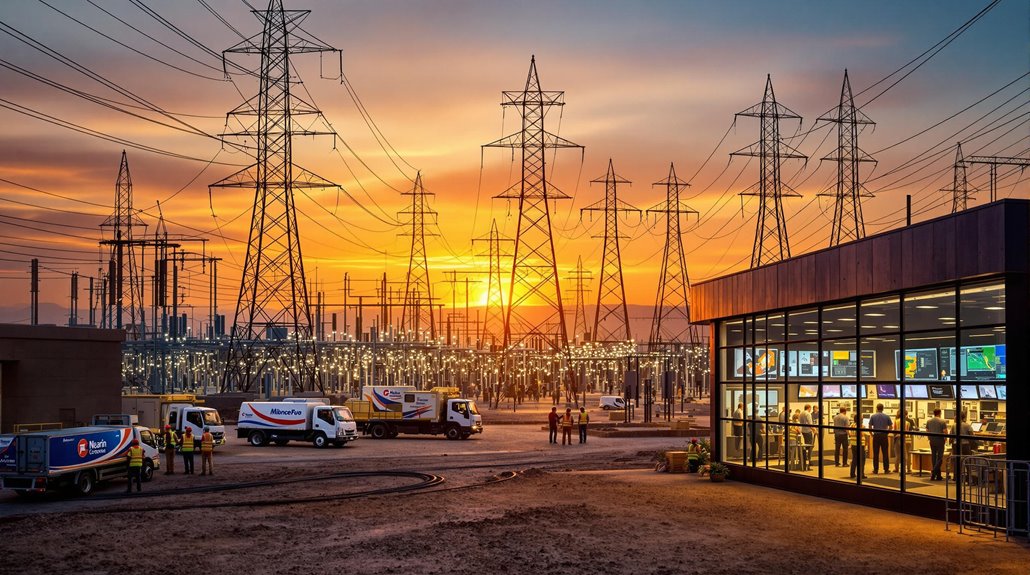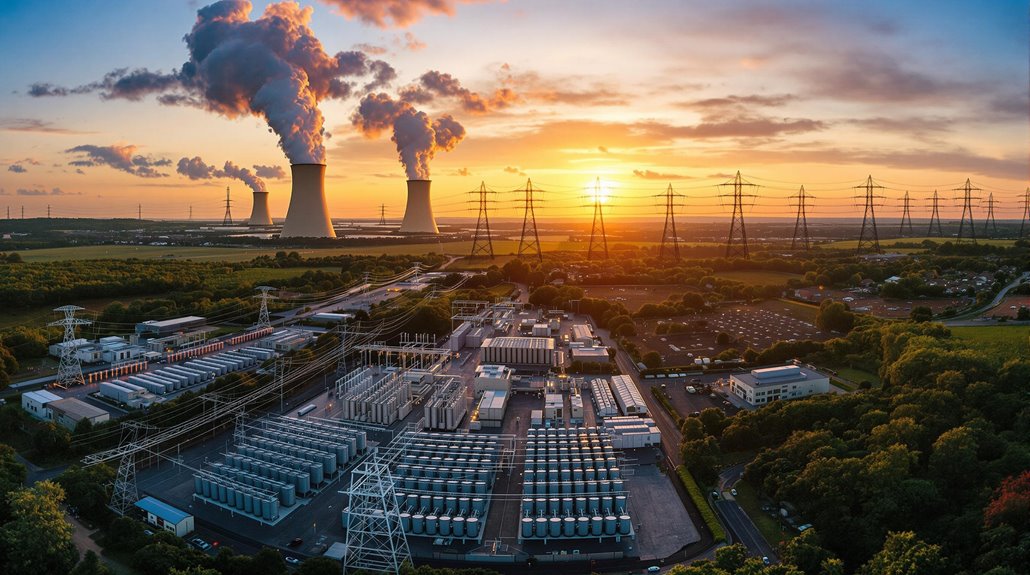How Is the Electrical Grid Regulated in the United States?
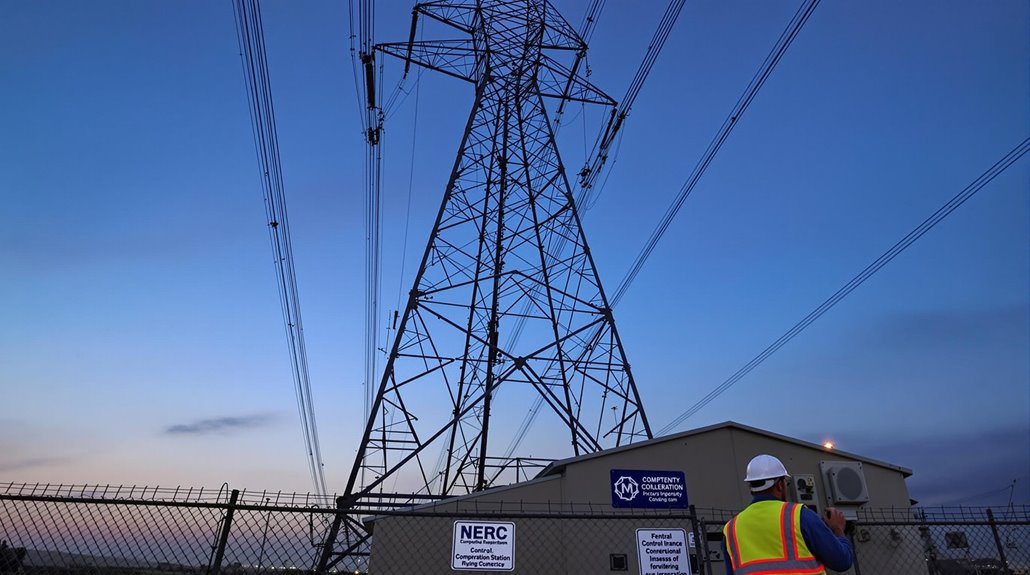
The U.S. electrical grid operates under a complex regulatory structure where you'll find multiple agencies sharing oversight responsibilities. FERC manages interstate power transmission and wholesale markets, while state public utility commissions handle local distribution and retail rates. RTOs and ISOs operate regional markets and coordinate power delivery across two-thirds of North America.
NERC enforces reliability standards, and the EPA controls power plant emissions. Understanding these regulatory layers reveals how America keeps its lights on.
Federal and State Regulatory Framework
Two primary regulatory bodies govern the U.S. electrical grid system: the Federal Energy Regulatory Commission (FERC) at the federal level and state public utility commissions at the local level. You'll find FERC overseeing interstate power transmission and wholesale electricity sales, while state regulators handle retail electric rates and local Utilities projects.
FERC's authority extends to grid reliability and System security through mandatory standards developed by the North American Electric Reliability Corporation. They've also gained oversight of cybersecurity and transmission line siting since 2005. Grid Operators must comply with both Federal Regulatory requirements and state commission rules to guarantee safe, reliable power delivery.
This dual oversight structure helps maintain open access to transmission networks while promoting competitive wholesale markets and protecting consumer interests. These regulations become especially critical as aging infrastructure components, averaging 40-50 years old, pose increasing risks to grid stability.
The Role of FERC in Grid Management
FERC fulfills several critical functions in managing the U.S. electrical grid. The Federal Energy Regulatory Commission oversees the bulk power system and regulates wholesale electricity markets across state lines. You'll find FERC working closely with Independent System Operators and regional transmission organizations to guarantee reliable power delivery.
When you're looking at Electric power transmission, FERC's authority extends to interstate transmission lines and the rates charged for moving electricity between regions. They'll coordinate with public utility commissions at the state level, but their primary focus remains on interstate commerce. FERC also monitors grid operators to prevent market manipulation and secure fair competition.
They've established rules that promote efficient electricity markets while maintaining the reliability and security of America's power infrastructure. The importance of FERC's role became evident during the Northeast Blackout of 1965 when grid vulnerabilities led to massive power failures affecting 30 million people across multiple states.
Regional Transmission Organizations (RTOs) and Independent System Operators (ISOs)

Regional Transmission Organizations and Independent System Operators represent the operational backbone of America's power grid management system. You'll find these non-profit entities managing about two-thirds of the electric grid across the U.S. and Canada, safeguarding reliable power delivery through sophisticated transmission systems.
RTOs and ISOs play a pivotal role in energy policy by operating wholesale electricity markets and coordinating power generation across regions. They're designed to provide open access to transmission systems while preventing discrimination among market participants. Under FERC's oversight, these organizations must follow approved tariffs that govern their operations and market rules.
There are currently seven RTOs/ISOs in North America, each responsible for maintaining reliability and efficiency within their designated territories. Their structure helps promote competition and guarantees fair pricing in the power sector. The devastating Texas Winter Storm of 2021 exposed critical vulnerabilities in grid management systems that weren't properly winterized or connected to broader regional networks.
Key Legislative Milestones Shaping Grid Regulation
Since the early 20th century, several landmark laws and court decisions have altered America's electrical grid regulation. The Natural Gas Act of 1938 first established federal oversight of interstate energy markets, while the Phillips decision of 1954 expanded this authority to wellhead sales. You'll find that these early regulations laid the groundwork for today's utility interconnection standards.
The Department of Energy Organization Act created a new unified approach in 1977, establishing the Energy Regulatory Commission (FERC) from its predecessor. Later, the Energy Policy Act of 1992 opened the door for competitive markets, leading to the formation of Independent System Operators (ISOs). The Energy Policy Act of 2005 further strengthened FERC's role in the United States by adding oversight of transmission reliability and cybersecurity, while enhancing its enforcement powers against market manipulation. These regulations ensure the safe and efficient transmission of alternating current power, which is crucial for long-distance electricity distribution across the national grid.
Market Oversight and Consumer Protection Measures
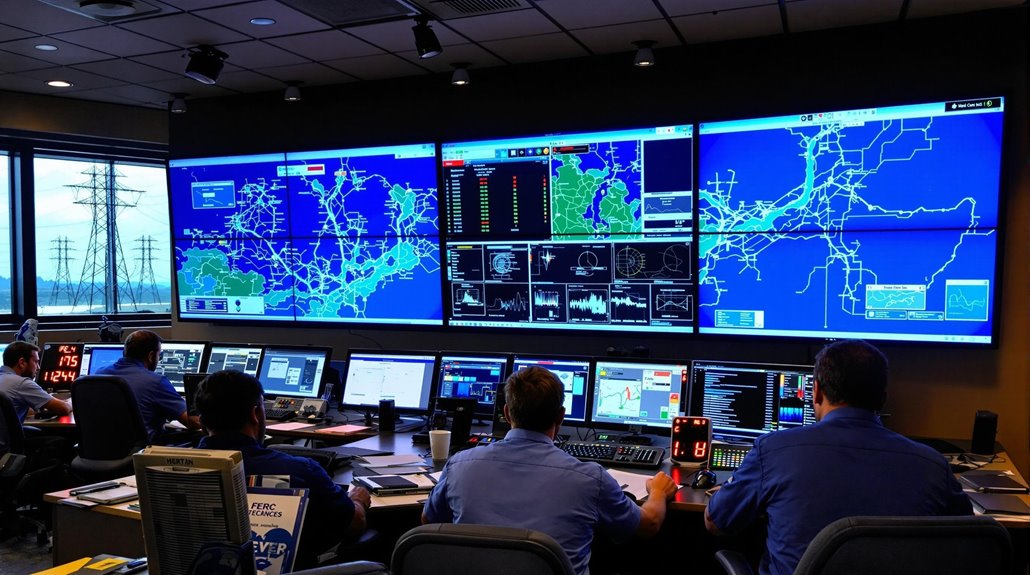
Market safeguards form the backbone of electrical grid regulation, protecting both utilities and consumers from unfair practices. You'll find that the Energy Regulatory Commission (FERC) oversees wholesale competition and monitors market participants to prevent price manipulation and guarantee reliability.
Independent System Operators (ISOs) and regional transmission organizations (RTOs) work as independent regulatory bodies, managing the flow of electricity and maintaining fair market conditions. They're responsible for coordinating between utility companies and enforcing consumer protection measures across state lines.
State regulatory agencies complement FERC's authority by supervising retail rates and local electricity policy. You'll notice this dual oversight system guarantees that both wholesale and retail markets operate transparently, while protecting your interests through price controls and service quality standards.
Grid Reliability and Security Standards
The electrical grid's reliability and security rest largely on mandatory standards enforced by the North American Electric Reliability Corporation (NERC). As a nonprofit organization, NERC oversees electric utilities and power plants across North America, ensuring they follow strict reliability standards for the transmission grid.
The Federal Energy Regulatory Commission (FERC) works alongside NERC by approving these standards and directing their development. FERC can require new measures to enhance grid security and resilience, particularly against cyber and physical threats. You'll find that compliance is strictly enforced - NERC can impose penalties up to $1 million per day for violations. When security incidents occur, like the 2013 Metcalf substation attack, FERC investigates and orders necessary improvements. Together, these agencies maintain an extensive set of cybersecurity requirements and incident reporting protocols for utilities.
Emerging Challenges in Grid Regulation
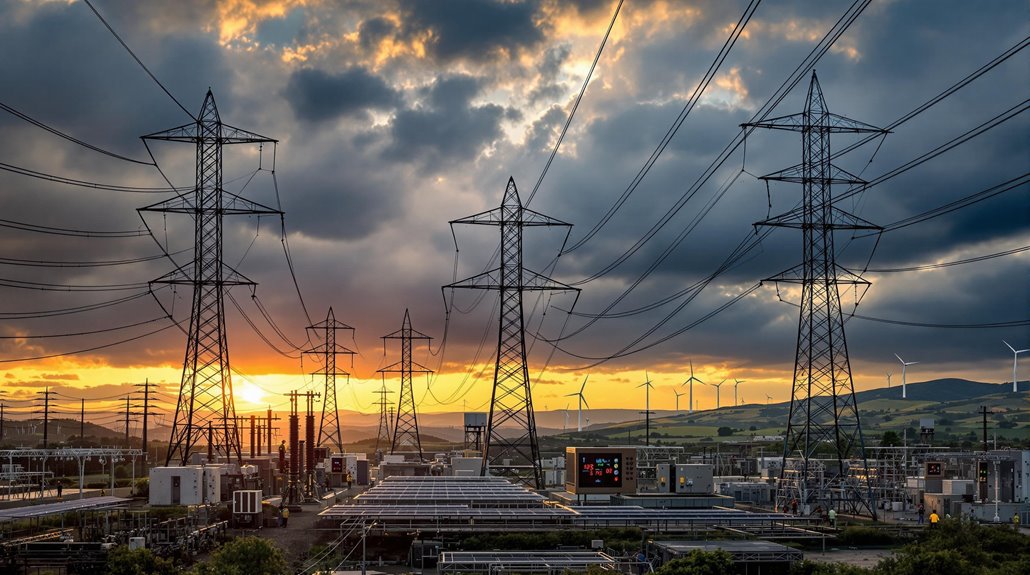
While NERC and FERC have established formidable regulatory structures, modern grid operations face unparalleled challenges. You'll find federal and state regulators contending with integrating renewable energy and distributed energy resources while maintaining reliability standards. The Energy Regulatory Commission (FERC) and Independent System Operators (ISOs) must balance traditional infrastructure with smart grid technologies and clean energy initiatives.
Key challenges you need to understand include:
- Coordinating demand response programs across multiple jurisdictions while ensuring fair market participation
- Implementing environmental justice considerations in grid planning and operation decisions
- Managing cybersecurity risks as smart grid technologies become more prevalent
You're seeing extraordinary complexity in grid regulation as regulators work to modernize infrastructure, incorporate new technologies, and address climate goals while maintaining system reliability and affordability.

